“Red beryl is 1,000 times rarer than diamonds, with Utah mines producing less than 0.5 carats per ton in 2025.”
Red Beryl Utah: An Overview of the World’s Rarest Gemstone
Red beryl, also known as bixbite gemstone or “red emerald,” holds an exceptional place in the minds of gemstone enthusiasts, miners, collectors, and investors alike. Why? Because red beryl rarity eclipses virtually every other gemstone: fewer than one red beryl crystal is found for every 150,000 diamonds mined, and its intense, raspberry-to-cherry-red coloration is unlike any other member of the beryl family.
Unlike more familiar beryl gemstones such as emerald (green beryl) or aquamarine (blue beryl), red beryl’s formation depends on a delicate balance of uncommon geological conditions: a combination of volcanic rhyolite rock and precise chemical circumstances, specifically the presence of manganese. These unique requirements mean gem-quality red beryl is found in only a handful of locations worldwide, with Utah as the gold standard in 2025 for both quantity and quality.
In this article, we explore the significance of red beryl in today’s context, including its properties, extraction, ethical mining challenges, and valuation landscape, all with a special emphasis on Utah’s role as the gemstone’s epicenter.
Mining Red Beryl in Utah: The Global Epicenter of Supply
Utah, specifically the Wah Wah Mountains located in the state’s south-central region, represents the primary global source for gem-quality red beryl. These Wah Wah volcanic rhyolites—dating back to the Tertiary geologic era—host the only known commercial deposit of significant size in the world. While red beryl is technically found elsewhere (e.g., New Mexico and Mexico), nowhere else do gemstone-grade crystals emerge at such remarkable clarity and color.
What makes the Wah Wah Mountains so singular? Here, red beryl crystals form within cavities in topaz-bearing rhyolite through a unique process involving volcanic gases, hydrothermal fluids, and trace amounts of manganese. This precise recipe occurs so rarely in nature that mining operations are both highly challenging and inherently limited in scale.
Gem-quality crystals are tiny (often just a few millimeters), widely dispersed, and incredibly fragile. In 2025, output remains tightly restricted, incenting Utah mining companies to employ the latest innovative extraction techniques:
Adopting these practices is crucial not just for yield, but also for upholding sustainability and ethical sourcing—key requirements for today’s discerning gemstone buyers and institutional investors.
Red Beryl Properties & Identification: What Makes Bixbite Unique?
Accurate identification and appreciation of red beryl’s properties are core to understanding its value. Red beryl belongs to the beryl mineral group (Be3Al2Si6O18) and possesses several traits that set it apart:
Identification requires a blend of visual analysis and spectroscopy. The best gems show vivid color, strong brilliance, and few inclusions. Due to their unique origins, Utah red beryl crystals sometimes exhibit slightly zoned coloration and can be accompanied by rhyolite host rock.
As red beryl mining technologies evolve—such as hyperspectral imaging for prospecting—rapid identification of signature beryl properties accelerates both extraction efficiency and environmental protection.
“Auction prices for top-quality Utah red beryl soared to $10,000 per carat, reflecting strong industry demand in 2025.”
Red Beryl Price, Value & Rarity in 2025: Why Utah is at the Industry’s Core
The 2025 red beryl value landscape is shaped by three main forces:
For top-quality, transparent, unheated red beryl from Utah, auction prices surpass $8,000–$10,000 per carat—sometimes exceeding the price of high-grade ruby or blue sapphire. Lower grades with visible inclusions or secondary hues (salmon, pink, or orange) fetch less but remain valuable because of their rarity.
What factors drive valuation?
Most stones remain under 1 carat. “Large” gems (1+ carat) are museum rarities. This fundamental scarcity means that even mid-grade Utah red beryl outperforms many excellent rubies or garnets in price.
Red Beryl Rarity & Value Comparison Table (2025 Data)
| Gemstone Name | Estimated Market Value (per carat, 2025) | Annual Production (carats/year) | Sources/Locations | Color Grade | Rarity Index* |
|---|
| Red Beryl (Utah) | $8,000 – $10,000+ | <250 | Wah Wah Mountains, Utah (USA) | Vivid cherry red to raspberry red | 1 (rarest) |
| Ruby | $1,500 – $25,000 (exceptional: $100,000+) | Several hundred thousand | Myanmar, Mozambique, Thailand, Sri Lanka | Crimson, pigeon blood red | 4 |
| Spinel (Red) | $200 – $3,000 | 10,000+ | Myanmar, Tanzania, Vietnam | Rose to deep red | 5 |
| Garnet (Pyrope, Almandine) | $30 – $500 | 100,000+ | Worldwide (Africa, India, USA) | Dark red, purple-red, orange-red | 6 |
*Rarity Index: Lower numbers indicate higher rarity (1 = most rare, 10 = most abundant among red gemstones in jewelry sector).
Red Beryl Meaning & Symbolism – Attributes That Enhance Demand
The meaning of red beryl extends far beyond its geological rarity. In crystal healing and metaphysical circles, bixbite gemstone is renowned for:
These attributes have amplified demand for red beryl jewelry, especially among bespoke designers seeking pieces with both rarity and symbolic depth.
Industry Trends: Red Beryl Mining, Ethical Supply, and Market Outlook for 2025 and Beyond
The red beryl mining industry in Utah is at a crossroads in 2025. On one side, explorers continue using advanced geological tools—like hyperspectral satellite mapping, AI-driven geochemistry, and remote sensing—to identify new deposits, even in inaccessible terrain. On the other, the geological requirements for formation are so specific that supply is likely to remain constrained well into the next decade.
Key market trends influencing red beryl in 2025:
Because of these shifts, Utah’s reputation as the only scalable source of ethical red beryl will only increase its market standing and value in the years ahead.
Sustainable Red Beryl Mining Practices & Satellite Technology
The evolving landscape of red beryl mining features not just improved extraction technologies, but also a migration toward satellite-driven mining management.
By combining ground-level best practices—such as selective extraction and precision blasting—with remote sensing and data analytics, Utah’s red beryl mines are setting industry standards for both productivity and stewardship in 2025.
How Satellite Data Empowers Ethical Mining – Farmonaut’s Perspective
From red beryl Utah mining to critical minerals exploration globally, satellite technology has become indispensable. At Farmonaut, our mission is to revolutionize mining management and sustainability using advanced satellite and AI systems. Our advanced resource management platform delivers:
With Farmonaut’s state-of-the-art solutions, Utah’s red beryl industry can maintain its world-leading ethical standards in mining—backed by transparent data, environmental awareness, and blockchain-based supply chain security. Farmonaut’s commitment: making satellite insights affordable, dependable, and accessible for every mine operator, jewelry brand, and institutional stakeholder.
Frequently Asked Questions: Red Beryl Utah & Industry Insights
Conclusion: Red Beryl Utah Reshaping Mining & Valuation in 2025
Red beryl is hailed as one of the rarest gemstones on Earth, and its allure only continues to grow in the modern gemstone and mining industry. As we journey through 2025 and beyond, the intersection of rarity, ethical sourcing, and technological innovation cements Utah’s status as the definitive global source for this captivating red treasure.
With ongoing advances in satellite monitoring, AI-driven advisory, and blockchain traceability platforms—such as those delivered by Farmonaut—stakeholders at every level can balance the pursuit of exceptional value with the stewardship of Earth’s most unique mineral resources. The result: a vibrant, future-ready red beryl sector where collectors, jewelers, and miners alike benefit from transparency, sustainability, and unyielding beauty.
If you are invested in future-ready mining management or traceable gem supply chains, explore Farmonaut’s solutions for satellite-driven insight and resource optimization. We are committed to empowering you to make informed, ethical, and data-driven decisions—today and for decades to come.

 385-444-7026
385-444-7026




 Service Areas
Service Areas























